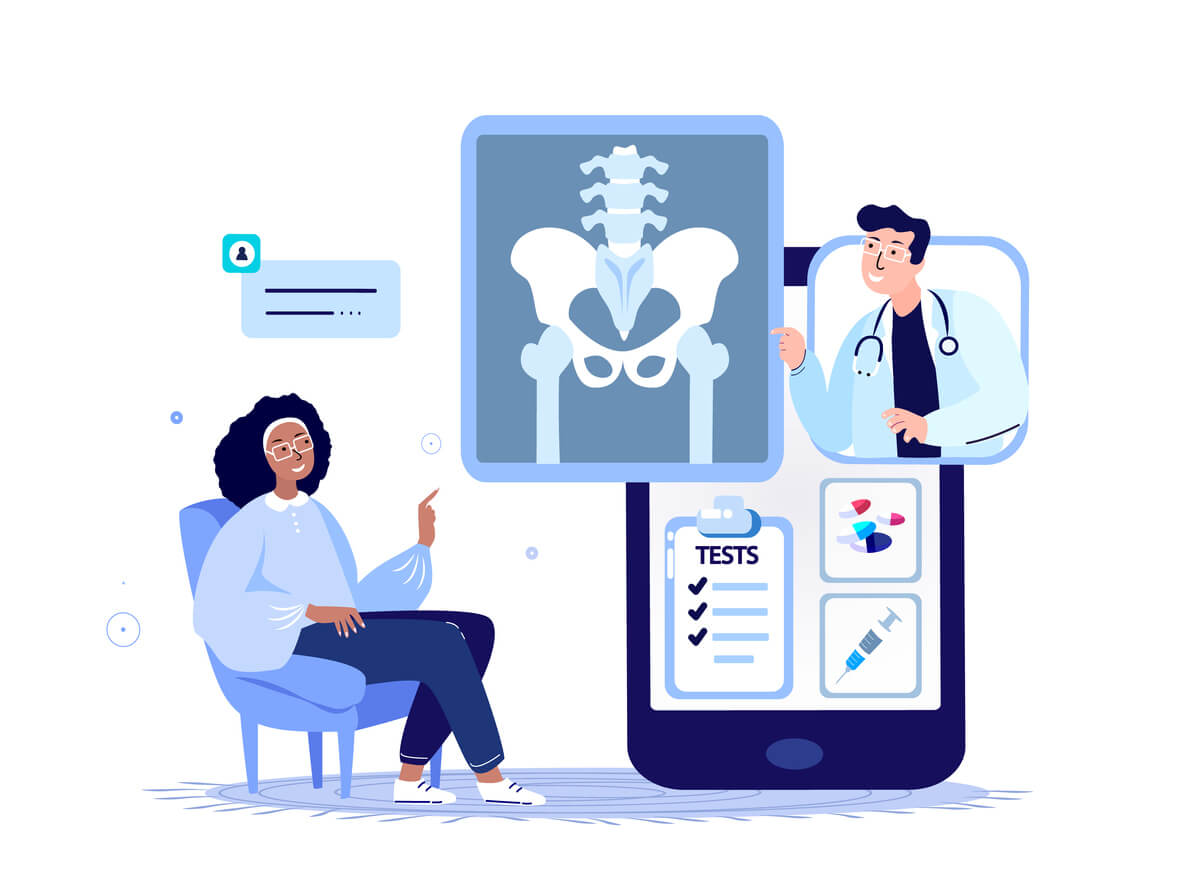What is hip bursitis?
Throughout your body, you have small, fluid-filled sacs called bursae (or bursa for just one) in places where tendons run across bones. They help to reduce friction between bones and soft tissues, assisting with smooth and pain-free movement.
If a bursa becomes inflamed or irritated, this is known as bursitis. In the hip, bursitis is most common in the trochanteric bursa on the outside of the top of the thigh. You can also get bursitis in the iliopsoas bursa in the groin, although this is less common.
Hip bursitis symptoms
When a hip bursa becomes inflamed, it can cause symptoms including: pain with movement and at rest, heat or redness, swelling, stiffness and limping.

What causes hip bursitis?
If you have overweight or obesity, or weak hip muscles, you may be more prone to developing hip bursitis. Hip bursitis can affect anyone, but women are more commonly affected than men.
Causes of hip bursitis include:
Injury – such as a fall onto the side of the hip
Overuse – repeated movements (such as those involved in cycling or running) can aggravate the bursa over time
Infection
How is hip bursitis diagnosed?
A qualified healthcare professional such as your doctor or physiotherapist can make the diagnosis. They will ask you some questions about your symptoms, such as how they started and how they affect your daily life.
They will also look at your hip joint, checking for things like stiffness, limping, or pain with movement. They might send you for imaging tests (such as an X-ray, MRI or ultrasound) or blood tests. These can help to rule out other causes for your symptoms and confirm the diagnosis.
You might also be referred to an orthopaedic specialist for help with getting the right diagnosis and guidance with treatment decisions.
Hip bursitis treatment
In most cases, hip bursitis is a short-term condition that can be managed with non-surgical measures. Treatment involves reducing inflammation, maintaining your mobility, and helping minimise the likelihood of the condition recurring.
Non-surgical treatments for hip bursitis
Lifestyle changes
There are things you can do to take pressure off the inflamed bursa, such as:
• resting from activities that provoke pain – such as climbing stairs or lying on the painful side.
• using a walking aid – such as crutches or a walking stick.
• losing excess weight if you need to – seeing a dietitian can help you with this.
Physiotherapy
A physiotherapist can give you exercises to help with hip bursitis. This might include stretches to improve hip flexibility and exercises to build muscle strength. They may also use therapies such as massage, ice, heat, or ultrasound to ease pain and inflammation.
Medications
Your doctor might prescribe medications to reduce the inflammation. They might also suggest you have an injection of corticosteroid and local anaesthetic into the bursa. This may provide temporary or permanent relief. If your symptoms persist, you can usually have another injection a few months later. If infection is present, you’ll be prescribed antibiotics to treat it.
Surgical treatment for hip bursitis
In rare cases, people need surgery for hip bursitis. Your doctor might advise surgery if you haven’t responded to other treatments, or if you have bouts of hip bursitis over several months.
Surgery usually involves removing the affected bursa, either through a cut or a keyhole incision. Your hip can still function without the bursa. After surgery, you may need to use a walking aid for a few days. You might also need some physiotherapy or rehabilitation to improve your hip flexibility, muscle strength, and walking pattern.
How long does it take to recover from hip bursitis?
Recovery time depends on several factors, such as your age, health, and how long you’ve had the condition. Most people can expect to feel better within a few weeks. However, recovery from hip bursitis may take six weeks or more, especially if you’re a bit older or have other health conditions. You doctor can talk to you about how long it might take you to recover from hip bursitis.
References
https://www.ncbi.nlm.nih.gov/books/NBK538503/
https://www.healthdirect.gov.au/bursitis
https://orthoinfo.aaos.org/en/diseases--conditions/hip-bursitis/#
Content reviewed by Dr David Slattery, Orthopaedic Surgeon at Knox Private Hospital and Holmesglen Private Hospital.
Our Hospitals
Find out more about the orthopaedic services at our hospitals.
NSW
Campbelltown Private Hospital
Hunter Valley Private Hospital
Nepean Private Hospital
Newcastle Private Hospital
Northern Beaches Hospital
Norwest Private Hospital
Prince of Wales Private Hospital Sydney Southwest Private Hospital
QLD
Brisbane Private Hospital
Gold Coast Private Hospital
Peninsula Private Hospital
Sunnybank Private Hospital
Contact Us
Need further assistance? For general queries on orthopaedic services at Healthscope, please contact us below. We're here to help.



